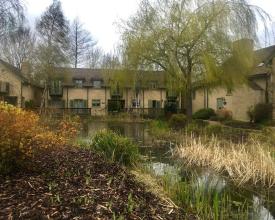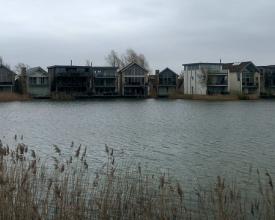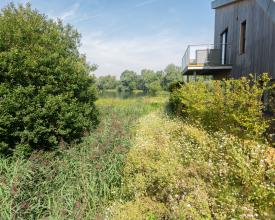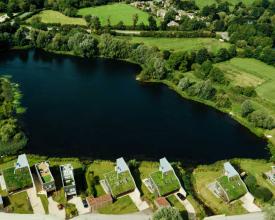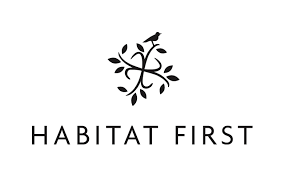
Réaménagement paysager d'une ancienne carrière au profit de l'homme et de la faune
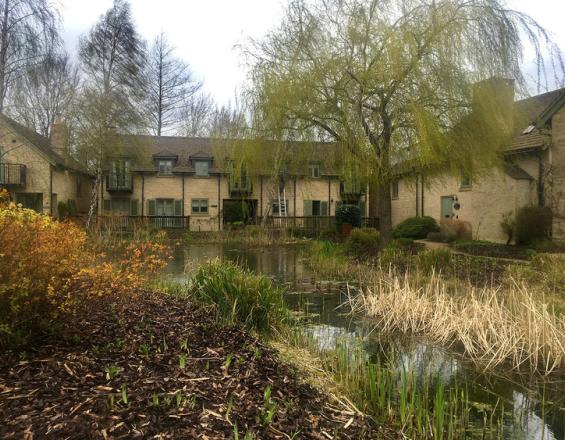
Lower Mill Estate a été conçu comme un réaménagement paysager d'une ancienne carrière, offrant jusqu'à 575 maisons de vacances dans un cadre vert et bleu au cœur des Cotswolds. Le projet, qui a reçu l'accréditation Excellent de Building with Nature, intègre un réseau d'infrastructures vertes qui remplissent diverses fonctions pour les personnes et la faune, tant à l'intérieur qu'à l'extérieur du périmètre du projet.
Les principales caractéristiques écologiques du domaine comprennent une grande variété de rivières, d'affluents, de canaux de drainage et d'étendues d'eau libre ; des cours d'eau bordés d'une végétation riveraine avec des lignes de saules bien visibles ; des bosquets de bois dispersés qui donnent un sentiment d'enfermement et un paysage intime ; des prairies de fauche riches en flore et une utilisation pastorale des terres ; une forme de terrain plat avec un ciel largement ouvert ; et un développement moderne au bord de l'eau avec un style architectural distinctif, tirant le meilleur parti des matériaux de construction qui reflètent la culture vernaculaire locale.
Contexte
Défis à relever
Emplacement
Impacts
À ce jour, 310 unités ont été achevées et Mill Village, Copse Mere, Clearwater Village et Howells Mere sont désormais terminés. En tant que projet accrédité Building with Nature, le site continuera d'être géré activement par Habitat First Group afin de maximiser sa valeur récréative et écologique.
Building with Nature est la première référence britannique en matière d'infrastructures vertes de haute qualité. Elle introduit un ensemble de normes, élaborées en partenariat avec l'industrie, qui définissent des infrastructures vertes de haute qualité à chaque étape du cycle de vie des infrastructures vertes, de la conception à la gestion à long terme, en passant par la mise en œuvre. Building with Nature offre une accréditation formelle des aménagements physiques et des documents de politique stratégique.
L'utilisation des normes Building with Nature est gratuite, mais l'accréditation est payante pour l'évaluation et l'audit. Les utilisateurs finaux sont les promoteurs, les constructeurs de logements, les planificateurs des autorités locales et un large éventail de professionnels de la conception et de la construction.

